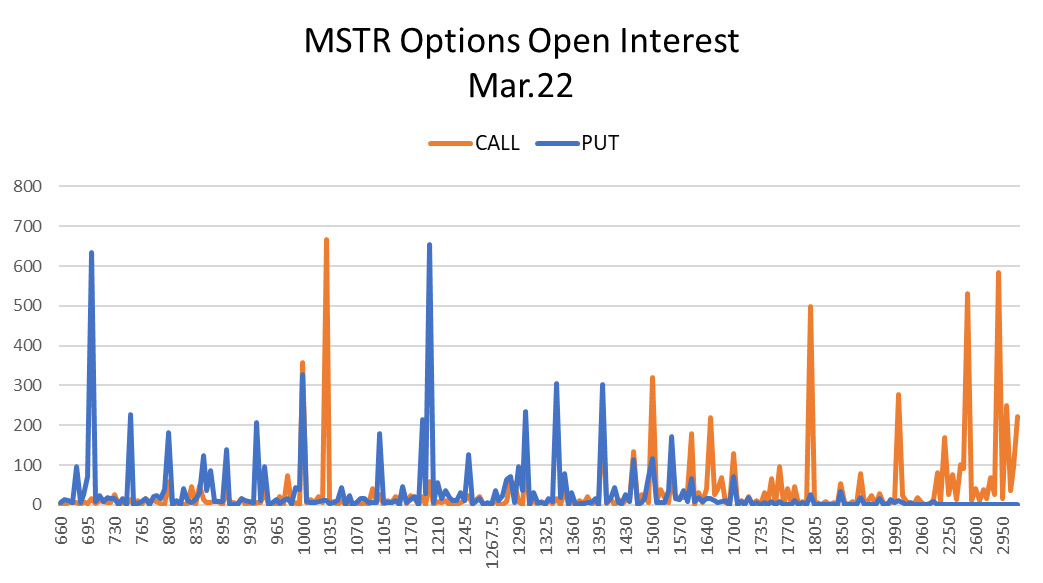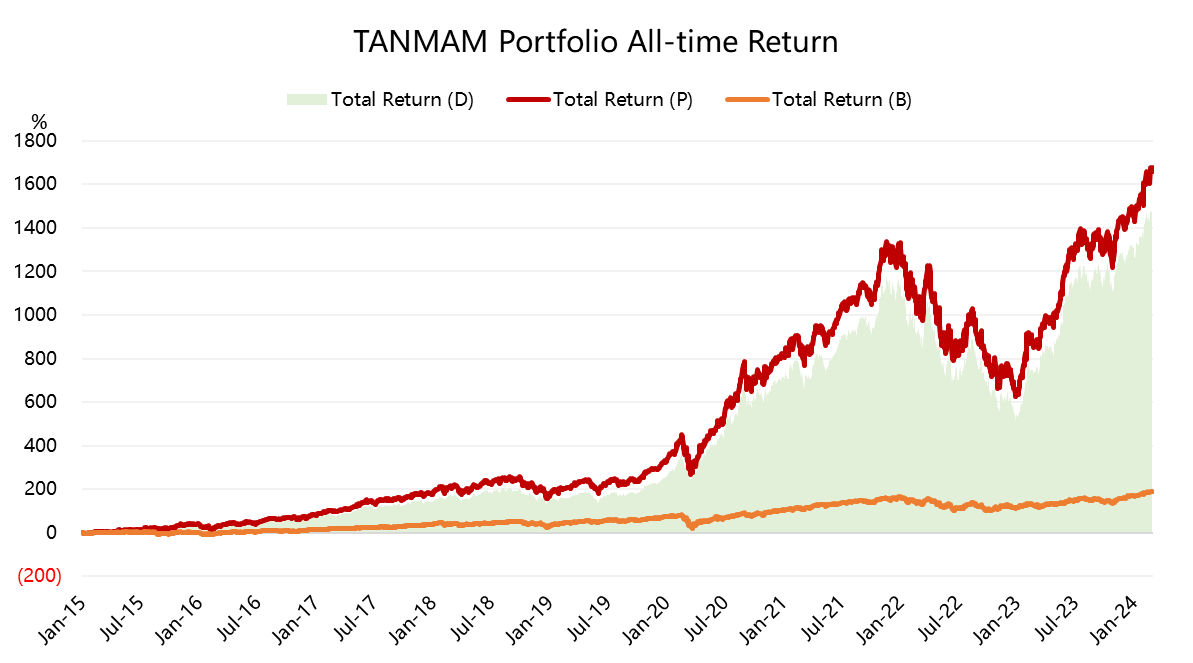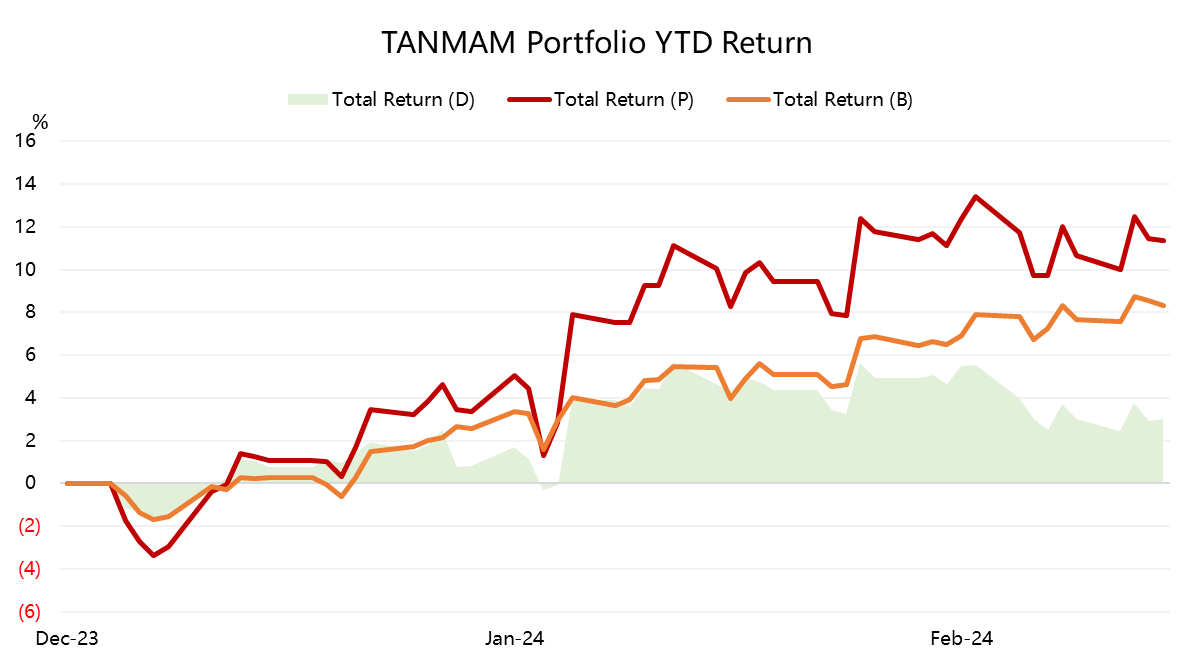BIG TECH WEEKLY | Why Tesla On Pressure?
Big-Tech’s Performance
The trading on Quadruple Witching Day is often particularly intense. This is the day when four financial derivatives of U.S. stocks— "stock index futures, stock index options, individual stock futures, and individual stock options"— all expire at once each quarter. Investors are eager to close their positions on this day, often leading to a sharp increase in market trading volume and greater volatility. Since Nvidia option trades account for 1/4 of the single-ticket option market, Nvidia option trading will be a focal point.
Statistics of the trading on Quadruple Witching Day in the past 30 years show that the probability of a rise in the week of March is slightly higher, but the probability of a rise in the following week is the lowest. Although the average return for the next week is 0.28%, the median is -0.40%, implying that it usually declines.
As of the close on March 14, among the big tech companies in the past week, the best performer was $Alphabet(GOOG)$ $Alphabet(GOOGL)$ +6.49%, followed by $Microsoft(MSFT)$ +3.93%, $Apple(AAPL)$ +2.37%, $Amazon.com(AMZN)$ +1.09%, $Meta Platforms, Inc.(META)$ -3.98%, $NVIDIA Corp(NVDA)$ -5.1%, $Tesla Motors(TSLA)$ -9.04%.
Big-Tech’s Key Strategy
Tesla, cyclical or growth?
$Wells Fargo(WFC)$ downgraded Tesla's rating to sell this week, with a target price of 125, suggesting a further decline of 30%. This is not surprising, as Tesla has been labeled as a "growth company with no growth" due to its consecutive declines in performance (single-digit revenue growth, decreasing gross profit margin, and operating profit margin).
In fact, Tesla's performance is inherently cyclical in nature, influenced by factors such as upstream and downstream, market supply and demand, and industry competition. It's evident that TSLA's stock price has fallen 32% since the beginning of the year, which is the market pricing-in the expectation of a downward cycle.
However, investors have never treated Tesla as a "traditional cyclical hardware factory": Tesla's average ROE over the past three years is 27.5%, Toyota's is 10.2%, General Motors' is 16.0%, and Ford's is 17.0%.
In terms of valuation, Tesla's P/E ratio is 64 times, Toyota's is 10 times, and both General Motors and Ford's are 6 times.
So, where is this valuation's "growth" reflected?
The cyclical nature of hardware does not reflect the seasonality of spring, summer, autumn, and winter, but the product. The premium on Tesla's stock comes from imaginative business aspects, such as autonomous driving, AI robots, etc.
2024 may be a year when input exceeds output, and two new models, Cybertruck and Model 2, may bring incremental growth in 2025-2027.
It's only been half a year since Morgan Stanley valued Dojo at $500 billion. Compared with the progress made by Claude 3 and Sora, which investors can directly perceive, Tesla may not yet have reached the "moment to impress everyone".
In the short term, the fundamentals are indeed under pressure, with investment banks lowering their target prices and the market's bullish and bearish tendencies aligning. Even $Morgan Stanley(MS)$ , which painted a rosy picture of AI last September, has reduced its target price from 400 to 320 despite maintaining a buy average.
But in the long term, the outlook remains positive, and investors who have always seen beyond 2030 are slowly seizing the opportunity to add positions, such as Cathie Wood.
Big-Tech Weekly Options Watch
The volume of option trading on Quadruple Witching Day surged, but most of the IVs fell due to the option closing, except for some companies currently in the limelight.
For example, the recent increase in BTC concept stock MSTR is greater than that of BTC itself. The large elasticity is related to its issuance of convertible notes to purchase all BTC. Due to the increased elasticity of the asset, the stock price fluctuates abnormally, posing a great threat to the accumulated shorts, and its option IV also rises against the trend.
Big-Tech Portfolio
The "Magnificent Seven" form an investment portfolio ("TANMAMG" portfolio), with equal weights and quarterly readjustments. Backtesting results since 2015 have significantly outperformed the S&P 500, with a total return of 1661.28%, while the same period $SPDR S&P 500 ETF Trust(SPY)$ return was 194.69%, reaching a new high.
The return so far this year is 11.34%, exceeding SPY's 8.34%.
The Sharpe ratio of the portfolio so far this year is 4.2, while SPY's is 3.9, and the information ratio of the portfolio is 2.5.
Disclaimer: Investing carries risk. This is not financial advice. The above content should not be regarded as an offer, recommendation, or solicitation on acquiring or disposing of any financial products, any associated discussions, comments, or posts by author or other users should not be considered as such either. It is solely for general information purpose only, which does not consider your own investment objectives, financial situations or needs. TTM assumes no responsibility or warranty for the accuracy and completeness of the information, investors should do their own research and may seek professional advice before investing.






“Tesla has been labeled as a growth company with no growth"
The high PE was tolerable when there is growth. But without growth, I am not sure if even a target price of $125 can hold. DYOD.